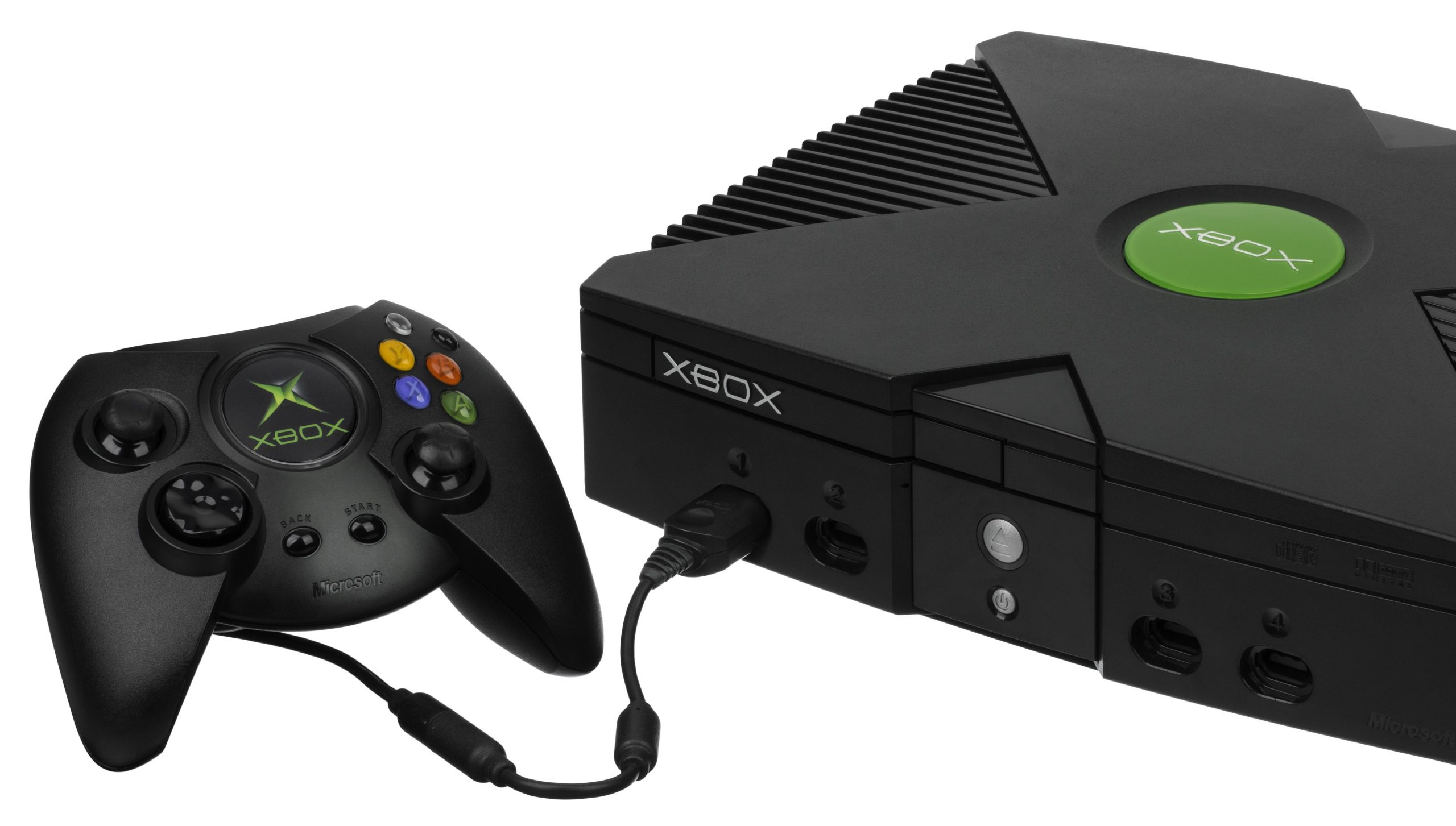
Microsoft’s console gaming division has been in turbulent territory for the past several years, with the company shutting down a number of its game development subsidiaries. Meanwhile, the company’s current home gaming console, the Xbox Series X|S lags behind the Nintendo Switch and PlayStation 5 in terms of the number of units shipped. Over 20 years in the console gaming industry, the Xbox has already left an indelibly influential mark that its competitors have followed as Microsoft faces a crossroads with how to best proceed.
Here is a look back at how Xbox changed the face of gaming upon its launch in 2001, how the Xbox 360 maintained the momentum as console gaming entered the high-definition era, and how Xbox lost its solid footing with subsequent console generations.
Enter Xbox: Microsoft Enters Console Gaming
For years, Microsoft enjoyed the success that PC gaming brought to its desktop platforms, especially games that it itself published, like the enormously popular Age of Empires franchise. However, while PCs had long outpowered and outperformed home and handheld gaming consoles from a technical perspective, the generation of consoles coming at the start of the 21st century had improved significantly in terms of technical capability. Microsoft CEO Bill Gates was particularly concerned by the upcoming PlayStation 2 and decided that Microsoft should enter the console gaming market to avoid declines in PC gaming revenue.
After an attempt to acquire Nintendo was rebuffed, Microsoft began developing its own hardware to compete with the Dreamcast, PS2, and Nintendo’s own upcoming console, the GameCube. The original Xbox was designed to easily convert PC titles into Xbox ports, with its development team taking influence from Microsoft’s DirectX programming interface when building the console. Seeing the rise of online gaming on PC, this consideration was also made relatively early on when developing the Xbox hardware to accommodate such an increasingly important feature.
To build the Xbox’s anticipated software library, Microsoft expanded its gaming division significantly to develop titles for both the PC and Xbox. Microsoft also reached licensing agreements with Bethesda SoftWorks and Tecmo to make their respective releases The Elder Scrolls III: Morrowind and Dead or Alive 3 Xbox-exclusive titles; the latter game would be available at Xbox’s launch. Microsoft’s biggest boon was acquiring Bungie and Halo: Combat Evolved, which would become another launch title and the defining franchise for the Xbox overall.
The Original Xbox’s Legacy and Innovations
While the Dreamcast had previously offered online gameplay, utilized by many of its sports and fighting games, along with Phantasy Star Online, the Xbox cemented the importance of online gaming for the home console market. Though not available until February 2002, three months after the console’s launch, the burgeoning Xbox Live service was a major success, improving significantly from the dialup internet modems that the Dreamcast relied on, with the Xbox using a broadband internet connection instead to improve latency and stability. Several sports and racing games would help launch Xbox Live as a viable online gaming platform, while 2004’s Halo 2 became the most popular title on the service during the original Xbox era.
The original Xbox was also the first console to have a sizable internal hard drive – not counting 1976’s Fairchild Channel F, which could store game high scores in its internal memory – preceding consoles either saved data directly to game cartridges or relied on memory card accessories to store data. Though players could purchase 32 MB memory cards to supplement the Xbox’s internal storage or transfer saves to other Xbox consoles, the Xbox itself had an internal storage capacity of eight to ten GB, depending on the model. The idea of internal console storage became an industry staple, with Xbox’s competitors, Sony and Nintendo, adding the component to the PlayStation 3 and Wii, following suit with subsequent console generations.
True to its origins, the original Xbox helped bridge the gap between conventional PC-oriented releases and the console gaming space. Apart from the first two Halo games, with the original having initially been planned as a PC-specific release, RPGs like Morrowind and Star Wars: Knights of the Old Republic received acclaimed ports to the Xbox at a time when the major console entries in the genre were dominated by Japanese publishers. Tom Clancy-branded tactical games, including Splinter Cell and Ghost Recon, flourished on Xbox while Electronic Arts-published sports titles, which had avoided the Dreamcast, became a major part of Xbox’s game library.
Though the Xbox was strongly supported by Western developers, it began to make numerous licensing deals with Japanese publishers. As Sega left the console market, sequels to Shenmue and Jet Set Radio would arrive on the Xbox while, following Dead or Alive 3’s successful Xbox launch, Tecmo’s Ninja Gaiden became a major hack-and-slash title on the console. With everything from original IP like Fable to ports of PC classics like Counter-Strike, Microsoft came out the gate swinging to ensure its inaugural console had a robust library.
Launched just three days before the GameCube, the original Xbox went on to sell over 24 million units worldwide, with 16 million of those sales being in North America. Though it outperformed sales for both the GameCube and Dreamcast, it was well below the expected 50 million lifetime unit sales Microsoft had hoped for its inaugural home gaming console, which, because of high manufacturing costs, meant a loss of over $4 billion during its lifetime. And though Sony’s PS2 helped inspire Microsoft to enter console gaming, the PS2 far outsold the Xbox, selling over 106 million units within the same period.
Xbox 360: Continuing the Momentum
Undeterred, Microsoft began actively planning for a console to succeed the Xbox as early as 2003, with what would eventually become the Xbox 360. The 360 launched in November 2005, almost a full year before the PS3 and Wii.
With its advanced hardware, the Xbox 360 gained high-definition presentation, with later models of the console including HDMI ports and the ability to upconvert visuals. The 360 greatly increased the internal storage capacity of consoles and improved the all-around performance of its Xbox Live platform, including features available through the console’s online capabilities.
Software-wise, the Xbox 360 not only boasted growing third-party support for its game library, but an increased number of first and second-party games. Numerous Halo titles were released for the Xbox 360 while hit franchises like Gears of War and Mass Effect got their start on the console (it wasn’t until Mass Effect 2 that the sci-fi franchise branched to other platforms). Through Xbox Live, smaller developers began offering games through Xbox Live Arcade while older games would receive re-releases on this online service.
The Xbox 360 Legacy
In addition to deepening the role of online connectivity in console gaming and helping usher in high-definition gaming, the 360 left an influential mark on the industry. Xbox Live Arcade was the first online store where gamers could purchase standalone, add-ons, and other digital goods. It predated the PlayStation Store, which began with the PS3, and the Wii Virtual Console by over a full year. Since then, virtually every console has included its own variation on an online store, with Xbox Live Arcade eventually rebranded as Xbox Live Marketplace, Xbox Games Score, and, finally, Microsoft Store.
For a time, the most downloaded game on Xbox Live Arcade was Geometry Wars: Retro Evolved. Over 600,000 games were purchased through the service less than six months after the 360’s launch. In fact, it was the positive reception to Street Fighter II: Hyper Fighting on Xbox Live Arcade that served as a major point in convincing Capcom to develop 2009’s Street Fighter IV after the franchise had been dormant for a decade. The Xbox 360 made games more accessible to players than ever with its online features and developers were taking notice.
Having made a strong debut with the launch of the original Xbox, and thanks to Microsoft’s continually expanding partnerships with outside developers, the Xbox 360’s game library was well over twice the size of that of the first Xbox and it was closing the gap in titles with Sony. Including Xbox Live Arcade titles, the Xbox 360 had 2154 games whereas the PS3 had 2562. Comparatively, the original Xbox had 998 games while the PS2 had 4376. Between indie titles and classic re-releases on the Xbox Live Arcade and broadening third-party support and developer acquisitions, Microsoft offered a more well-represented and extensive game library than it had before, which had historically been a major strength on Sony’s consoles.
Microsoft would release five Halo games and an entire trilogy of Gears of War titles on the Xbox 360 alone. They also doubled down on the first-person shooters that became ubiquitous with the original Xbox, with Activision’s Call of Duty a perennial best-seller on the console. The Grand Theft Auto, Resident Evil, and Final Fantasy franchises (which had previously largely been associated with the PlayStation) saw multi-platform releases on the 360 to great success. With the Xbox 360, Microsoft issued a strong reminder that the PS3 wasn’t the only third-party friendly platform in town and its deep bench of titles signaled the console’s growing popularity loud and clear.
Beyond its online capabilities, the Xbox 360 was the first platform to feature achievements, rewarding players for accomplishing a myriad of in-game tasks that they should show off to their friends and the community at large. Well-received, Microsoft would expand its achievement system to its PC titles by 2007 while Sony added a similar trophy system for its consoles, starting with the PS3 in 2008 through a firmware update. This achievement/trophy system has similarly become a staple for many modern gaming platforms.
The Xbox 360 did garner a reputation for faulty hardware, with initial models of the console undergoing a general system failure that gained the nickname “the red ring of death” for its changed power display. Subsequent models improved the console’s performance, though this dubious distinction carried on for much of the 360’s life cycle. Despite this, it’s important to note that the 360 is Microsoft’s best-selling console, selling over 84 million units worldwide. Though far outsold by the Wii, the 360’s sales were only marginally behind the PS3, which sold over 87 million units in its lifetime.
Xbox One: Losing Ground and an Uncertain Future
Microsoft launched its third home console in 2013, deciding to make this platform an all-in-one multimedia provider to watch film and television, listen to music, and, of course, play video games. With this singular ethos in mind, Microsoft dubbed the console the Xbox One. While generally well-received, Microsoft faced criticism with its early plans to need the console to be online regularly for software licenses and binding games to the initial console they were purchased for. In the face of this backlash, these plans were dropped by the console’s launch.
Though the Xbox One outsold the Wii U, it lagged far behind PlayStation 4 sales, selling approximately 10 million units after a full year on the market. In its lifetime worldwide sales, the Xbox One sold over 58 million units, roughly half of the PS4’s lifetime sales and even further behind the Nintendo Switch upon that console’s launch in 2017. Ultimately, the Xbox One didn’t bring the industry innovations that its predecessors had, nor did its signature franchises – most notably Halo and Gears of War – have the staying power with fans compared to prior titles in each property.
Microsoft has continued to struggle in reclosing the gap with Sony with its current console, the Xbox Series X|S, launched in direct competition with the PlayStation 5 in 2020. By 2023, the Series X|S had sold over 21 million units, approximately half of the PS5’s 40 million units within the same time frame. Instead of innovation, Microsoft’s recent strategy has been to buy a number of major-label developers and publishers (including Bethesda SoftWorks and Activision Blizzard) in an effort to prioritize console game development towards its own platforms.
Given the extensive layoffs and major studio shutdowns that have rocked the gaming industry over the past couple of years, including the recent closure of the acclaimed developer Tango GameWorks, it’s clear this strategy isn’t working. Though the Xbox and Xbox 360 helped change the face of the industry and gave Nintendo and Sony, respectively, healthy competition to raise their game, Microsoft has since slid into a consistent third place among the three major console companies. To stay viable, Microsoft literally can’t afford to build its own bullpen of exclusive developers or rest on the expected reputation of its established gaming brands.
Instead, looking back at the peak of Microsoft’s ubiquity within the console gaming industry from 2001-2012, it needs to find a way to present itself as a healthy alternative to the PS5 and fill in that crucial niche of appealing to teenage and young adult gamers that helped launch the brand in the first place. Microsoft’s initial plans for the Xbox One, including its controversial internet requirements and attempt to make the console an all-encompassing entertainment center diluted the brand and it still hasn’t fully recovered. Microsoft needs to create new IPs while figuring out ways to keep its existing properties relevant for modern gaming sensibilities.
Microsoft got into the console gaming space because its rivals began to compete with the PC market’s technical capabilities. A big part of the reason that the Xbox and Xbox 360 eras were Microsoft at their most impactful, was interconnectivity with the PC side of Microsoft’s gaming interests and a robust mix of original IPs, third-party blockbusters, and indie favorites through Xbox Live Arcade. In short, Microsoft needs to leverage its PC advantage with a wide library of titles, the things that gave the original Xbox and Xbox 360 the legs it needed to join the console wars at a full sprint.
The post What Xbox Can Learn From The Console’s Golden Age appeared first on Den of Geek.





